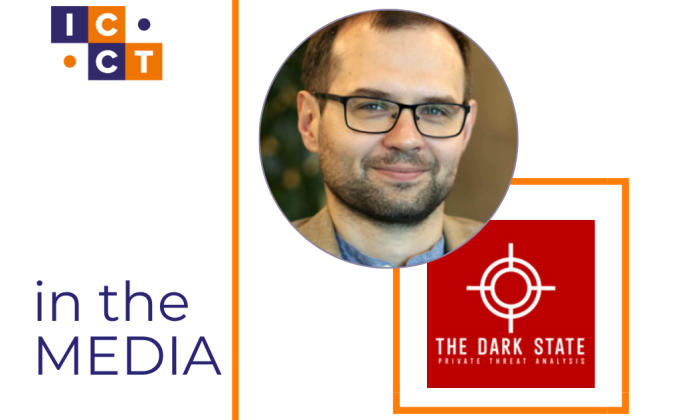While Western governments are still deliberating whether to arm the Syrian opposition, hundreds of young European jihadists have already joined the opposition’s ranks and are fighting on the ravaged streets of Aleppo and Damascus. The exodus of young European jihadists, men as well as women, is inundating Western intelligence services. The large numbers involved complicates efforts to keep track of those travelling to and from the region, and once volunteers have crossed the border into Syria the picture becomes murkier still. On 13 March, the Dutch National Coordinator for Counterterrorism and Security (NCTV) raised the national terrorism threat level to "substantial", in large part due to the estimated one hundred Dutch jihadists already operating in Syria. Cause for worry is not so much what they are doing there, but the threat they could pose if and when they return. According to the NCTV, ten jihadists have apparently already returned to the Netherlands and are now subject to government surveillance.
Other European countries, including the United Kingdom and Germany, also have significant numbers of citizens fighting Assad’s regime in Syria. Mali, however, is proving a less attractive destination for jihadists, in spite of a forceful French military intervention against different Islamic terrorist (and rebel) groups. According to French open source reports, only a handful of French nationals are thought to be fighting with al Qaida in the Islamic Maghreb (AQIM) and the Movement for Oneness and Jihad in West Africa (MUJAO). Two fighters of French nationality have been captured in Mali and will be extradited back to France. This stands in stark contrast to the estimated 80 French jihadists in Syria, a figure that is probably on the conservative side. So why are many of Europe’s aspiring jihadists travelling to Syria, to fight in a bloody civil war between Muslim parties, and not Mali, where a Western power is fighting Islamist groups?
The first reason would seem to be of a practical nature: EasyJet to Turkey is the first step in Easy Jihad. A cheap ticket to a Turkish holiday destination or to Istanbul followed by a bus trip to the Syrian border is about as simple as a jihad trip can get. The only challenge is to then cross the border, find and join one of the armed opposition groups, which are incidentally, not all radical Islamic groups. Reports indicate that many rebel groups do receive and welcome Western jihadists, while paradoxically the al Qaida affiliated al Nusrah front is more reticent when it comes to integrating unknown recruits. Undoubtedly those already integrated in the ranks of different groups can facilitate the recruitment of their own friends and acquaintances into the networks.
The journey into Mali is much more daunting for a would-be jihadist. International flights only land in the Capital city Bamako, and the journey to the North, where the fighting is taking place, is more arduous still. Even journalists, with all their international connections and experience, are finding it difficult to reach the battlefield. The Northern route through Tunesia or Libya is probably less attractive still. For an aspiring jihadist, brought up in European suburbia, it would be practically impossible to find, let alone join one of the closed terrorist networks operating in the desolate stretches of the Sahel.
The second reason relates to the media coverage of both conflicts. The Syrian conflict has received massive media attention. On a daily basis, reports from Syria are broadcast in the news and in current affairs shows. Many journalists from all over the world have traveled to Syria to cover the conflict, and several have been killed. International attention for the plight of the opposition also resonates on the internet. Websites like Youtube host "exclusive" footage that provides an often shocking insight on the situation in Syria. According to BBC journalist Paul Wood “this feels like the first YouTube war. (..)There's a guy with a machine gun and two guys next to him with camera phones".
In Mali it is a different story. Journalists have labeled the situation in Mali as "a conflict behind doors" as they have found it challenging to reach the northern region and even more difficult to get information out of the French military. Access to areas where military operations are taking place is almost impossible. Few press conferences have been given and whereas the French military is generally reluctant to divulge information, the Malian military has actually intentionally obstructed journalists in their reporting on several occasions. Whether as a cause or effect of this policy, events in Mali are no longer being covered in newspapers, and even reports of the death of al Qaida’s second in command, Abu Zeid, have only sparsely figured in mainstream media. Few images and stories of the conflict in Mali, certainly in comparison to Syria, reach Twitter and YouTube.
The creation of a narrative for jihad on the internet has undoubtedly contributed to motivating foreign fighters. Widespread availability of images depicting suffering and destruction in Syria, combined with the frame of a secular autocrat oppressing Sunni Muslims are feeding a social media jihad. This narrative is compelling enough to actually bring people into action. When combined with a strong emotional appeal that resonates with the existing perceptions of discrimination and suppression of Muslims worldwide, internet is proving to be a driver for the radicalisation of small groups. As the atrocities of Assad’s regime and Western inaction inspire some to take up action to help their fellow muslims, those killed on the battlefield are also honoured and glorified on YouTube and Facebook.
There are many more reasons why Syria is, as the UK’s Foreign Secretary recently said, "now the number one destination for jihadists anywhere in the world today". Many foreign fighters, whether residing in Europe or elsewhere, are of Arabic origin, and Syria’s position in the heart of the Middle East makes it an ideological cause. The Arabic and Turkish diaspora identify themselves easily with the Syrian people, while the grievances of the sub Saharan population in Mali simply do not resonate within these groups.
As the conflict drags on and more fighters are streaming in, an (originally) secular protest against an autocratic regime is turning into an increasingly radicalised interethnic civil war. It is clear why Syria is more appealing to the aspiring jihadist than Mali, but the reasons why so many Western fighters choose to join the fight still warrants more research. Nonetheless, European jihadists make up only a fraction of the foreign fighters in Syria, which in turn form but a small element of the confederation of Syrian opposition forces. Unless the sources of radicalisation are addressed in Europe’s suburbs, the EU will continue to export fighters and not arms to Syria.






